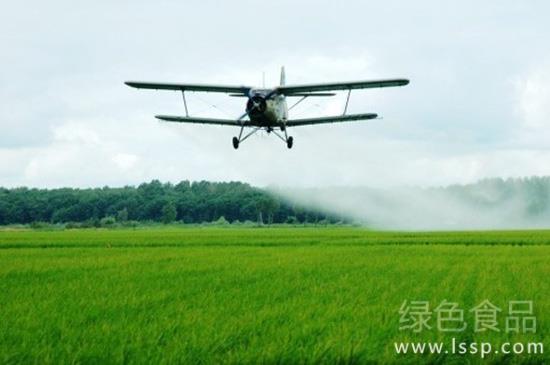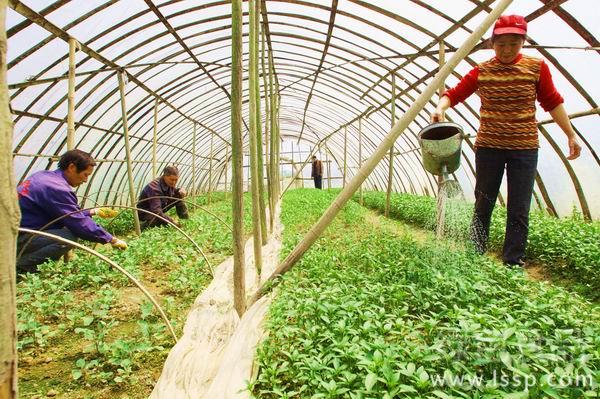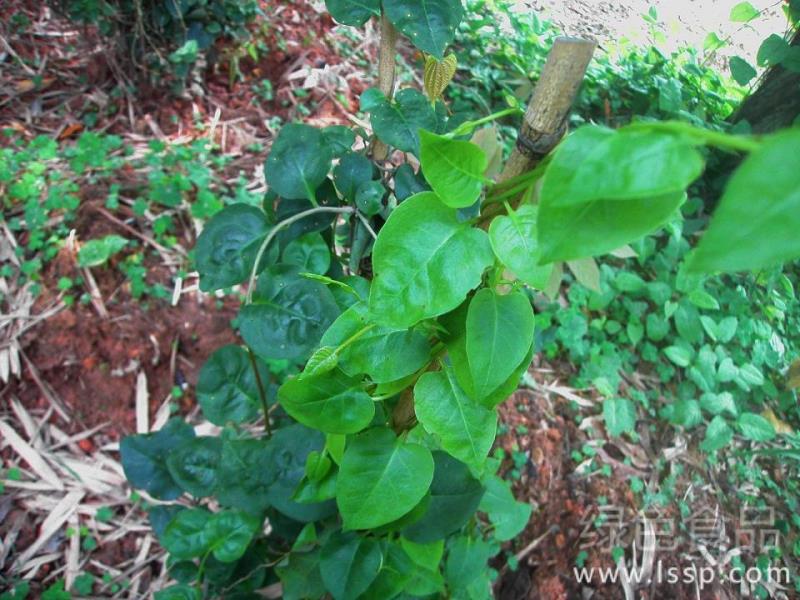Master the free agricultural plant protection technology with the advent of winter

Modern plant protection technology
Plant protection technology is used to prevent, eliminate or control diseases, insects, grasses and other pests that harm agriculture and forestry, as well as purposefully regulate the growth of plants, insects, products and other related agricultural technologies. Through the adoption of ecological control, agricultural control, biological control, physical trapping and other comprehensive control measures to control crop diseases and insect pests to ensure the sustainable development of agriculture.
1. Winter tillage
Helicoverpa armigera generally pupate at 2.5-6 cm from the ground (up to 9 cm deep). Winter ploughing can destroy the pupa chamber, change the natural state of the pupa, and reduce the emergence rate of the next spring; part of the pupae can be turned to the surface, so that they can be dried to death, frozen to death or pecked by natural enemies; part of the pupae can be turned into the deep soil, so that they can not normally Eclosion and be suffocated, so as to reduce the source of overwintering insects. The earlier the winter ploughing, the better, generally speaking, after the previous crop harvest, it should be finished before the ground is frozen (the permafrost layer is more than 5 cm), so as to prolong the weathering time, improve the pest control effect, and help to accept more rain and snow. The depth of ploughing should be more than 10 cm, and the deeper the winter ploughing, the better the pest control effect. It should be noted that due to the strong flying ability of cotton bollworm adults, winter ploughing must be carried out in a large area to be effective; in addition to the reserved white stubble of cotton, interplanting rows in wheat fields and blank orchards should also be carried out.
two。 Winter irrigation
Winter tillage followed by winter irrigation or spring irrigation can not only settle and weathered the soil, but also increase the mortality of overwintering pupae. According to the Chinese Academy of Agricultural Sciences, when the soil relative water content is 40%, the pupa mortality rate of Helicoverpa armigera is 35.7%, and the adult Eclosion rate is 40%. When the soil water content is 70%, the pupa mortality rate is 46.7%, and the adult Eclosion rate is 33.3%. When the soil water content reaches saturation, the pupa mortality rate is 100%. Other data show that the overwintering mortality rate of cotton bollworm pupae in the plots ploughed and irrigated in winter is about 80%, the overwintering mortality rate in the plots with only ploughing and no irrigation is 6070%, and that in the plots without ploughing and irrigating is only 3040%.
3. Winter insolation
In the cold winter, the freeze-drying treatment of cotton seeds can, on the one hand, reduce the water content of the seeds and increase the storability, and on the other hand, it can improve the germination rate of the seeds and enhance the cold resistance of the seedlings after sowing. Third, low temperatures in winter can directly freeze to death cotton pests overwintering in cottonseeds (according to the survey, red bollworm larvae overwintering in cottonseeds usually account for about 15% of the number of overwintering insects), while ultraviolet rays in sunlight can kill some pathogens attached to the surface of seeds. Freeze-drying method: choose a sunny day to spread the selected cotton seeds on the leeward and sunny open space with a thickness of 3-4 cm and freeze for 7-10 days; if you dry the seeds for 3-5 days before spring sowing, the effect will be better. Do not freeze the cotton seeds with more than 12% water content, so as not to freeze the seeds and lose the ability to germinate.
4. Winter shovel
That is, to eradicate weeds. After crop harvest, some pests often transfer to the fields and surrounding weeds to survive the winter, and in early spring, these weeds often become "shelters" and wild hosts for overwintering pests. Relevant experts have investigated the weeds around the cotton field. There are 8 tigers per square meter and 1194 cotton red spiders on weed hosts in early spring. Therefore, it is an effective measure to control overwintering pests by combining accumulated fertilizer in winter and spring, eradicating weeds inside and outside the field, or spraying weeds in early spring.
5. Winter roast
After harvest, some pests (such as corn borer) often hide in the stalks or spikes of host crops to survive the winter; in winter or early spring, they are burned by using the stems or spikes of these host crops as fuel (or feed, fertilizer, etc.). The overwintering base of pests can be greatly reduced.
6. Winter painting
Painting the trunk white in winter can not only prevent the sunburn and freezing injury of fruit trees, but also eliminate a large number of germs and pests overwintering on the trunk. The preparation ratio of whitening agent is generally as follows: 10 parts of quicklime, 2 parts of stone-sulfur mixture, 2 parts of salt, 2 parts of clay and 40 parts of water. It is better to apply white twice, the first time after the fallen leaves of fruit trees to the time before the soil freezes, and the second time in early spring.
7. Bound in winter
Making use of the selectivity of pests to overwintering places, grass handles or broken gunny bags were tied to the branches of fruit trees after autumn to induce pests to pupate through the winter, and then concentrated killing. According to the investigation, the trapping effect of this method on apple and pear heart borer can reach 47.78%, and it also has a very good trapping effect on Hawthorn red spider, jujube armyworm, leaf miner, apple leaf roll moth, brown leaf moth, etc., especially when the overwintering insect population density is high in that year, the trapping effect is more obvious.
8. Winter shaving
As the saying goes, "if you want to eat pears, shave the bark." In the rough bark, warped bark and trunk cracks of fruit trees, there are often a large number of overwintering bacteria and pests. Winter bark scraping has a good control effect on a variety of diseases and insect pests. According to the local investigation, after scraping the orchard, the overwintering larvae of jujube armyworm and pear star caterpillar decreased by 8090%, the apple borer and pear heart borer decreased by 6080%, and the Hawthorn red spider decreased by 7080%.
- Prev

Technical suggestions on vegetable management with wide range of temperature change in winter
Technical suggestions on vegetable management with wide range of temperature change in winter
- Next

Cultivation techniques of Panax notoginseng with rich nutrition and stem and leaf vegetables
Cultivation techniques of Panax notoginseng with rich nutrition and stem and leaf vegetables
Related
- Fuxing push coffee new agricultural production and marketing class: lack of small-scale processing plants
- Jujube rice field leisure farm deep ploughing Yilan for five years to create a space for organic food and play
- Nongyu Farm-A trial of organic papaya for brave women with advanced technology
- Four points for attention in the prevention and control of diseases and insect pests of edible fungi
- How to add nutrient solution to Edible Fungi
- Is there any good way to control edible fungus mites?
- Open Inoculation Technology of Edible Fungi
- Is there any clever way to use fertilizer for edible fungus in winter?
- What agents are used to kill the pathogens of edible fungi in the mushroom shed?
- Rapid drying of Edible Fungi

